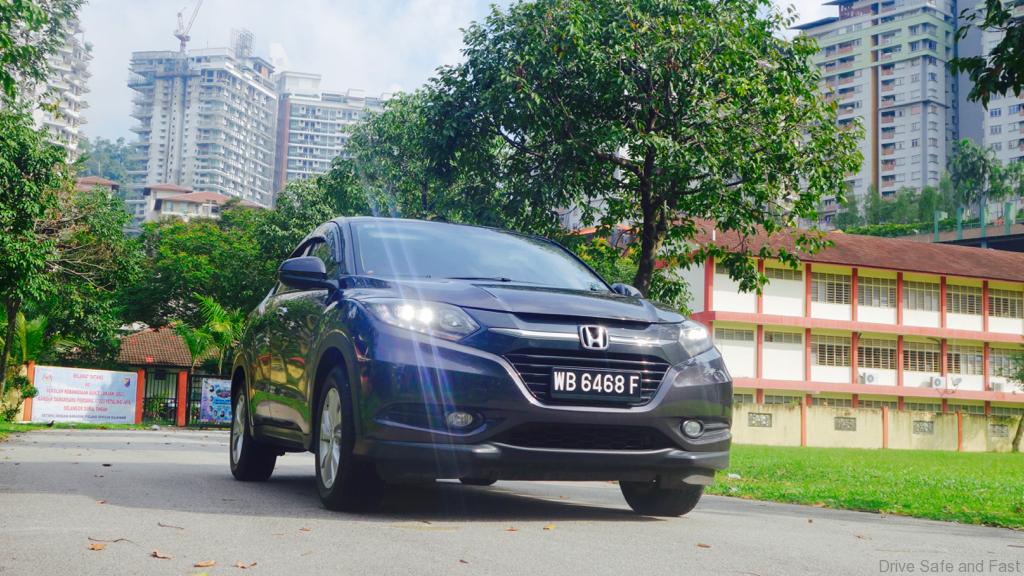Let’s make one thing clear, the HR-V was the most important car release of 2015. No supercar or big badge refresh came close to the impact this bodystyle-blending vehicle made. It was the crossover everyone wanted and every carmaker wishes they had come up with first.


As with many of Honda’s current gen-products, the HR-V looks futuristic like a concept car but with parts from the production-ready bin. Unlike the other names on the company’s roster though, the HR-V doesn’t have any real lineage. Sure, there was a ‘first-generation’ HR-V that was made between 1999-2006, but Honda doesn’t regard that vehicle as canon. In other words, apart from being a little smaller than the CR-V, Honda’s designers were allowed to come up with something wholly original.

Boy did they put their liberty to good use. The design of the HR-V is pretty much faultless. Even without fancy projector or twin LED headlights, it’s still a very modern and premium looking vehicle. It manages to integrate coupe styling extremely well too. A sloping roofline and a broad, low stance go hand in hand with the hidden rear door handles to create the illusion that the HR-V is a 2-door when in fact it has 4.

In terms of performance, we’re happy to report that the HR-V isn’t at all lacklustre. Yes, it is a crossover, but it’s nothing at all like the 2-litre CR-V to drive. It doesn’t feel much like a SUV in terms of seating position, but it still has the presence and visibility of a very large car. That makes it a bit better for driving fast but here’s the thing – you shouldn’t be driving this car fast and not just because you might be breaking the law. It’s just not made for that.


The 1.8-litre i-VTEC engine does have all the power a vehicle like the HR-V will ever need, but that power is channelled through a CVT gearbox. With a transmission system like that, driving the HR-V any harder than is expected can be a little less than gratifying. Yes, you will get to the speeds you want in the time you expect, but you will not be left with a smile on your face. What the CVT gearbox is extremely good at though, is fuel economy.

It took this reviewer a few days to figure out, but hopefully HR-V owners have caught up to the way the car maximises efficiency by clinging on to momentum. Once the HR-V is up to speed, very slight dabs of the accelerator pedal are enough to keep things going for large stretches. There’s something about the lack of gear changes that helps the CVT minimise losses when frugality is needed. Give it some clever programming courtesy of Honda and you’ve got yourself a very clever way to minimise energy wastage. It’s no wonder the HR-V won “Green SUV of the Year”.

Like we said though, all-out performance in the HR-V can be costly. Honda may be able to perform magic in terms of pricing, equipment and looks, but revving hard still means more petrol is consumed. No one runs away from that without modern turbocharging or ultra high compression engines. And in this HR-V, the single overhead cam motor takes a lot of convincing to get its power to the wheels. Again, this is a crossover not a sports car.

We tested the HR-V in a multitude of configurations, and no matter how much weight we carried, performance and fuel consumption seemed easy to predict. It just goes to show that the engine choice was spot on. That being said, rear passengers definitely aren’t as pampered as they would be in many of Honda’s other cars above RM100K. The City for instance starts at a much lower price point, is smaller and lacks partial leather seats, but has rear air-con blowers. The Civic is also a much more comfortable car for those ferrying 2 or more occupants in the rear as the bench is wider and it’s more comfortable as it sits above multi link suspension where the HR-V has a torsion beam.

But the HR-V isn’t targeted at large families, even if those with large families are still drawn to the vehicle for its looks and kit. Honda have deliberately hidden the rear door handles high away from the reach of small children and given the rear bench an unnatural upright position. Instead, the HR-V gets top points in the versatility department. Yes, the seats are there if needed, but if it’s cargo you’re looking to haul, the entire row folds flat to reveal a bay larger and more easily accessible than the ones you find on mid-sized SUVs!

On the whole, the HR-V is a lot more important than many of its detractors make it out to be. You can tell a lot about what people value based on the sort of car they buy. The HR-V has shown us more clearly than any other car what exactly that is. They want something that’s the whole package. The car must tick all the boxes and Honda certainly have done that with the HR-V. Even the safety equipment list is complete. Stability control, 6 airbags and all the Braking Aids you could ask for.

It even has a premium feel about it. Leather upholstery, semi-leather seats, an electronic parking brake, Dual LED headlamps, and little styling details in the interior that make it seem like at least twice its price. All of that makes it easy to see why the long waiting list doesn’t deter new buyers from putting cold hard cash down. It’s hard to argue against the case the HR-V makes for itself, quite honestly the practicality, quality, packaging, pricing and styling make any of our complaints seem petty.

Honda HR-V 1.8L V Specifications
Engine: 1.8-litre SOHC i-VTEC
Displacement: 1799cc
Transmission: CVT
Max power: 142PS @ 6500RPM
Max torque: 172Nm @ 4300RPM
Price: RM117,250.99

